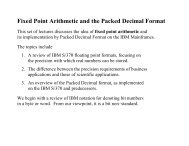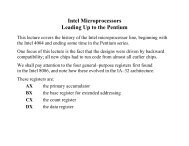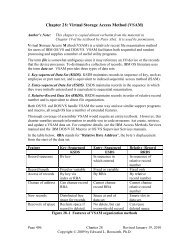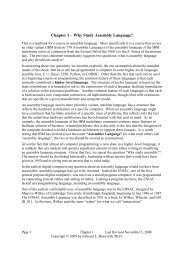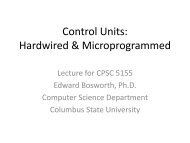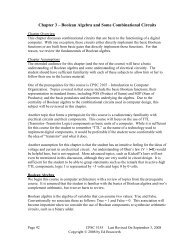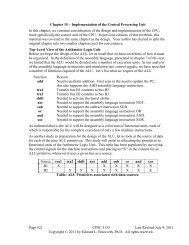Microprogramming: History and Evolution - Edwardbosworth.com
Microprogramming: History and Evolution - Edwardbosworth.com
Microprogramming: History and Evolution - Edwardbosworth.com
You also want an ePaper? Increase the reach of your titles
YUMPU automatically turns print PDFs into web optimized ePapers that Google loves.
<strong>Microprogramming</strong> <strong>and</strong> Memory Technologies<br />
The drawback of microcode has always been memory performance; the CPU<br />
clock cycle is limited by the time to read the memory.<br />
In the 1950’s, microprogramming was impractical for two reasons.<br />
1. The memory available was not reliable, <strong>and</strong><br />
2. The memory available was the same slow core memory as used in<br />
the main memory of the <strong>com</strong>puter.<br />
In the late 1960’s, semiconductor memory (SRAM) became available for the<br />
control store. It was ten times faster than the DRAM used in main memory. It<br />
is this speed difference that opened the way for microcode.<br />
In the late 1970’s, cache memories using the SRAM became popular. At this<br />
point, the CROM lost its speed advantage.<br />
―For these reasons, instruction sets invented since 1985 have not relied on<br />
microcode‖ (Hennessy & Patterson, 1990).



